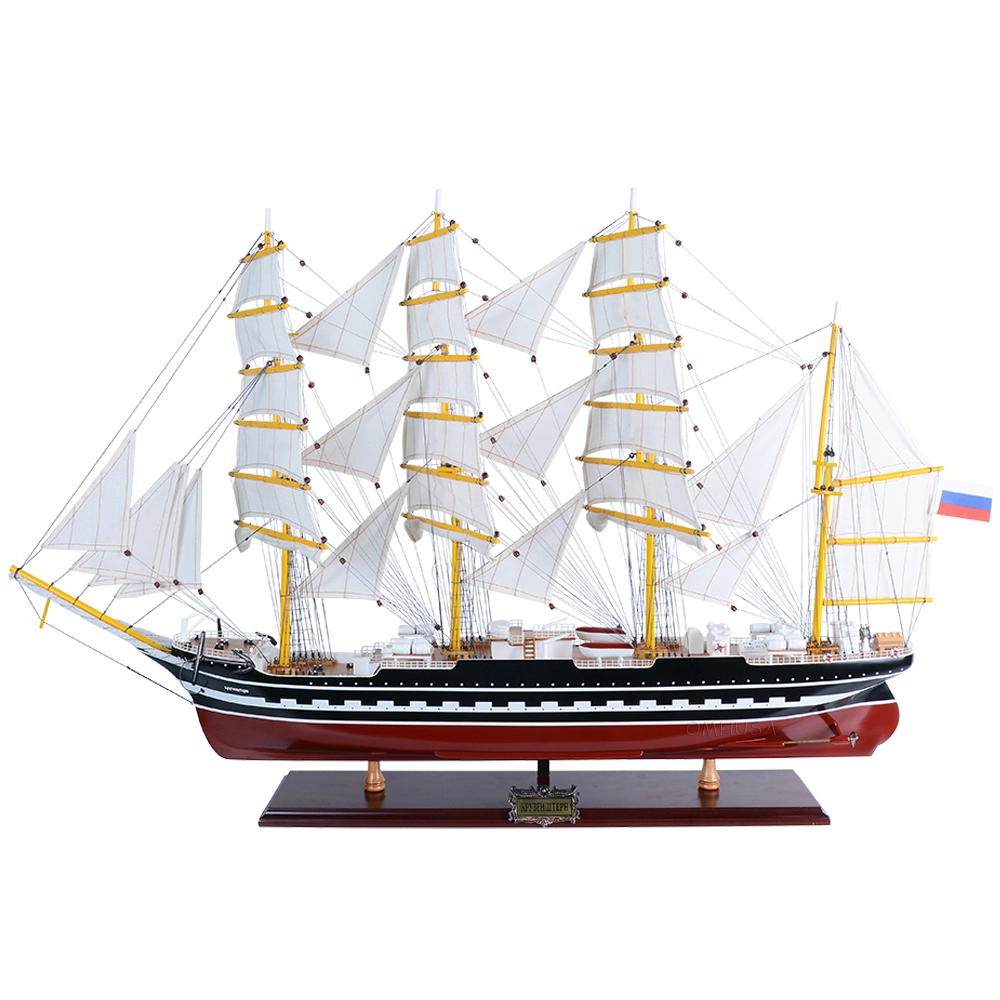Description:
Kruzenshtern is one of the world’s largest and most famous tall ships, celebrated for its impressive maritime heritage. This Painted 40 Inches model pays homage to that legacy, capturing the vessel’s grandeur in a museum-quality piece of nautical art. Built entirely by hand using the traditional plank-on-frame method, it showcases a blend of cedar, mahogany, teak, and other exotic woods, ensuring both durability and timeless beauty. Multiple layers of varnish add a glossy finish to the hull, while premium linen sails and rust-resistant metal fittings highlight the dedication to authenticity—no plastic parts are used.
After hundreds of hours of meticulous craftsmanship and strict quality control, the model arrives fully assembled and ready for display.
- Elegant Hull Design & Color Palette: A sleek, smooth hull with a distinctive design featuring a black and white upper section that seamlessly transitions into a bold red lower portion, complemented by off-white sails.
- Majestic Masts & Authentic Rigging: Four towering masts rise gracefully from the deck, intricately rigged to replicate the original sail plan, emphasizing the ship's historic stature.
- Detailed Deck Features: The deck is meticulously adorned with finely crafted railings, lifeboats, and anchors, along with a prominently displayed Russian flag at the stern, capturing the vessel's authentic maritime charm.
Whether placed in a home, office, or gallery, this Kruzenshtern Painted L80cm model serves as a tribute to the golden age of sail, offering a tangible connection to maritime history and the spirit of seafaring adventure.
Order your Kruzenshtern Painted 40 Inches long model today and let this masterpiece transform your space into a tribute to legendary voyages!
History:
The Kruzenshtern, originally launched as the Padua in 1926, is a storied four-masted barque and a relic of maritime history. Built at Geestemünde in Bremerhaven, Germany, she was initially commissioned as a cargo ship. Her early years were marked by voyages that stretched from Hamburg to Talcahuano, Chile, taking 87 days on her maiden journey, and involved transporting goods like construction materials to Chile and wheat from Australia. The Padua was distinctive for its color scheme mirroring the German national flag of the time, featuring a black hull, a white waterline, and a red underwater body.
In 1946, following World War II, the ship was surrendered to the USSR as part of war reparations and renamed Kruzenshtern, after the Baltic German explorer Adam Johann von Krusenstern. Transitioned to Soviet control, she served various roles from a naval training vessel to a platform for hydrographic and oceanographic surveys under the auspices of the Soviet Academy of Sciences. During this period, she was pivotal in training generations of cadets and future fishery officers.
Kruzenshtern's later years were no less dynamic. In 1976, she participated in the Tall Ships race and Operation Sail in New York Harbor, where she earned the nickname "Dieselshtern" due to suspicions about her unexpected speed. Her ventures continued through the 1980s and 1990s, including a circumnavigation to commemorate the 200th anniversary of her namesake's journey.
The vessel has also faced challenges, such as the foremast damage off Bermuda in 2009, and incidents in 2014 and 2015 involving collisions and a grounding. Nonetheless, Kruzenshtern remains active, primarily used for training and participating in international regattas, with her home port in Kaliningrad, serving as a bridge between the past and present in maritime training and exploration.



